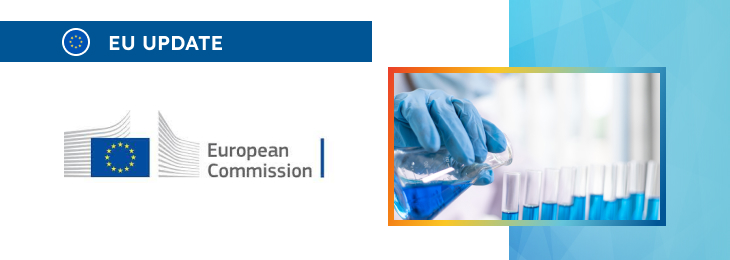The article highlights the key points related to the regulatory framework for reporting requirements in the context of certain studies medical devices are subject to.

Table of content
The Medical Device Coordination Group (MDCG), an EU advisory body in the sphere of medical devices, has published a guidance document dedicated to safety reporting in performance studies of in vitro diagnostic (IVD) medical devices under Regulation (EU) 2017/746 (IVDR).
The document provides an overview of the applicable regulatory requirements, as well as additional clarifications and recommendations to be taken into consideration by medical device manufacturers, study sponsors, and other parties involved to ensure compliance thereto.
It is also important to mention that provisions of the guidance and recommendations provided therein could be subject to changes, should such changes be reasonably necessary to reflect corresponding amendments to the underlying legislation.
Introduction to IVD Safety Reporting
The document addresses the safety reporting requirements in performance studies for in vitro diagnostic medical devices under the European Union’s Regulation (EU) 2017/746, also known as the In Vitro Diagnostic Medical Device Regulation (IVDR).
It specifically references Article 76(2), detailing the obligations of sponsors (the parties responsible for the studies) to report various types of events during performance studies across all participating Member States through an electronic system stipulated by IVDR Article 69.
The scope of the guidance covers both pre-market performance studies and post-market performance follow-up (PMPF) studies, emphasizing the necessity of timely reporting and the ability to submit preliminary reports if needed.
The document also addresses the aspects related to the incomplete functionality of the Eudamed system, proposing interim procedures for safety reporting.

Scope of IVD Performance Studies
The document further clarifies the types of performance studies covered by the IVDR. It includes studies involving surgically invasive sample-taking solely for the study, interventional clinical performance studies, studies that involve additional invasive procedures, and those that assess IVDs outside their intended scope but already bearing a CE marking.
It also extends to combined studies of medicinal products and IVDs, emphasizing that the IVDR safety reporting requirements apply in these contexts.
The recommendations provided in the guidance should be considered by the parties involved for ensuring compliance with the IVDR during these varied study setups, supported by further guidelines from MDCG 2022-10 on interfacing with the EU Clinical Trials Regulation (CTR).
Terms and Definitions
In order to assist the parties involved, the document also provides definitions of the main terms and concepts used in the context of performance studies for IVD products including, inter alia, the following ones:
- Adverse Device Effect (ADE): Any adverse event directly related to the use of an IVD in a performance study.
- Adverse Event (AE): Any adverse medical occurrence, including inappropriate patient management decisions or unintended clinical signs.
- Anticipated Serious Adverse Device Effect (ASADE): A serious adverse effect identified during the risk assessment phase of a device’s use.
- Companion Diagnostic (CDx): Devices crucial for the effective use of corresponding medicinal products, aiding in the identification of suitable or at-risk patients.
- Device Deficiency (DD): Inadequacies in an IVD’s identity, quality, reliability, or performance that could potentially lead to serious adverse events.
- Incident: Problems arising from the use of a device on the market that affect its performance or user safety.
- Interventional Clinical Performance Study: Studies where the results directly impact patient management decisions.
- Malfunction: Any operational failure of an IVD when used according to its instructions or study plan.
- Performance Study (PS): Conducted to verify or confirm the analytical or clinical performance of an IVD.
- Serious Adverse Event (SAE): Any event leading to severe health deterioration, hospitalization, or necessitates medical intervention.
- Subject: Individuals participating in a performance study and providing specimens for examination.
- Unanticipated Serious Adverse Device Effect (USADE): A serious adverse device effect not consistent with the reference safety information.
Conclusion
In summary, the present guidance document issued by the MDCG outlines the basics of the regulatory framework for performance studies involving in vitro diagnostic medical devices. The document highlights the key points to be taken into consideration by medical device manufacturers, study sponsors, and other parties involved, and also provides recommendations important for ensuring compliance with the requirements such studies are subject to
How Can RegDesk Help?
RegDesk is an AI-powered Regulatory Information Management System (RIMS) designed to simplify global compliance for medical device companies. With regulatory intelligence covering 120+ markets, RegDesk helps you prepare and publish global submissions, manage standards, conduct impact assessments, and stay ahead of regulatory changes all from a single, centralized platform. Expanding into new markets has never been easier.

